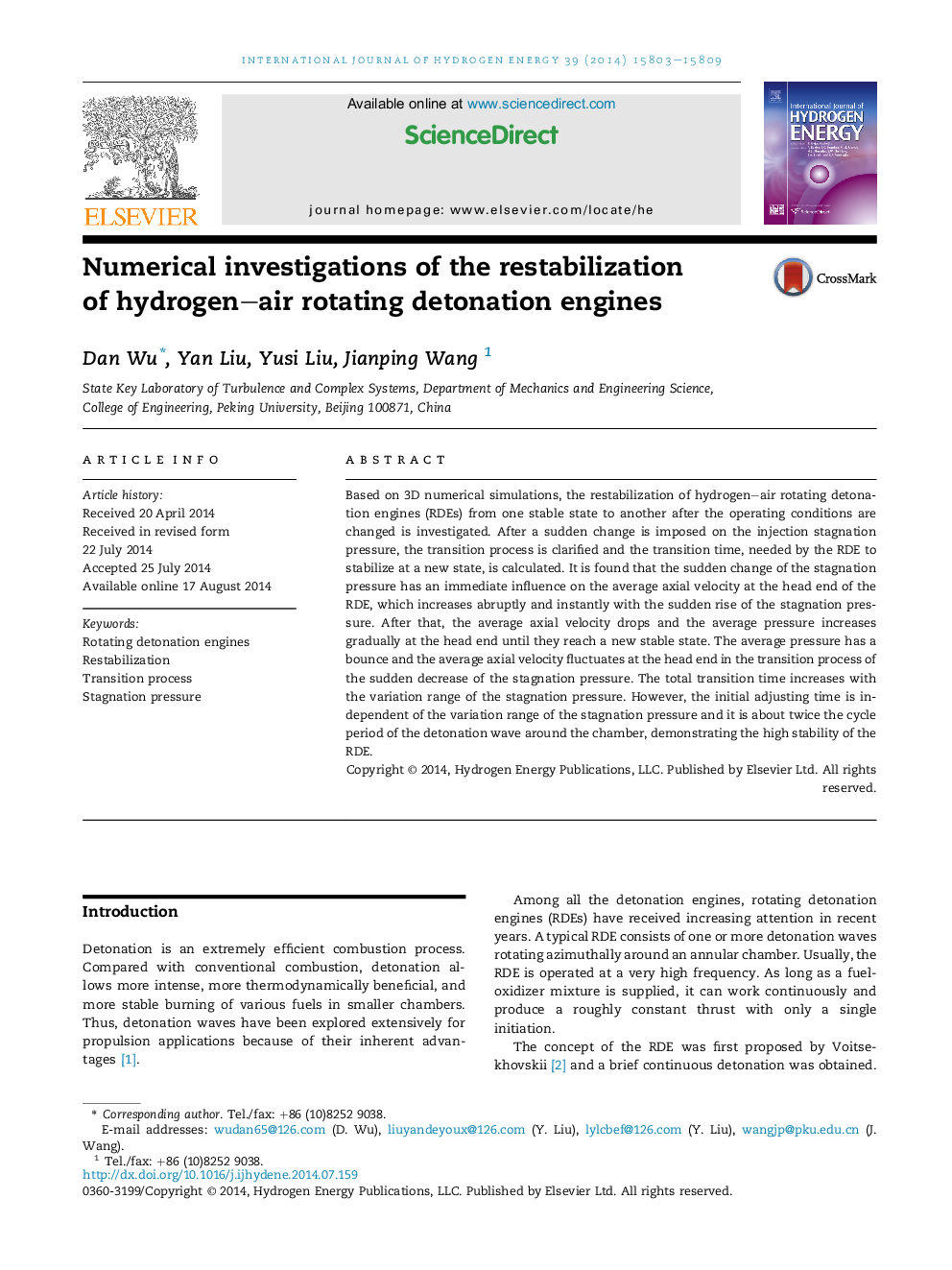| Article ID | Journal | Published Year | Pages | File Type |
|---|---|---|---|---|
| 1272419 | International Journal of Hydrogen Energy | 2014 | 7 Pages |
•The transition process is more complicated in the decreasing case than that in the increasing case.•The initial adjusting time is about twice the cycle period of the detonation wave around the chamber.•The initial adjusting time keeps constant as the stagnation pressure variation range increases.•The total transition time needed by the RDE increases with the stagnation pressure variation range.
Based on 3D numerical simulations, the restabilization of hydrogen–air rotating detonation engines (RDEs) from one stable state to another after the operating conditions are changed is investigated. After a sudden change is imposed on the injection stagnation pressure, the transition process is clarified and the transition time, needed by the RDE to stabilize at a new state, is calculated. It is found that the sudden change of the stagnation pressure has an immediate influence on the average axial velocity at the head end of the RDE, which increases abruptly and instantly with the sudden rise of the stagnation pressure. After that, the average axial velocity drops and the average pressure increases gradually at the head end until they reach a new stable state. The average pressure has a bounce and the average axial velocity fluctuates at the head end in the transition process of the sudden decrease of the stagnation pressure. The total transition time increases with the variation range of the stagnation pressure. However, the initial adjusting time is independent of the variation range of the stagnation pressure and it is about twice the cycle period of the detonation wave around the chamber, demonstrating the high stability of the RDE.
